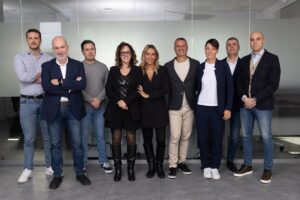A financial portfolio is all the financial assets held by a person or an institution, be it a company or a fund. Here are five points to better understand what we are talking about.
Table of Contents
What can a portfolio contain?
A portfolio can contain stocks, bonds, commodities, cash, funds and policies held by an investor.
It can also consist of non-tradable securities, such as works of art or private investments. In essence, the portfolio composition has virtually infinite combinations of assets, modulated according to the investor’s financial objectives
Asset allocation and risk
A well constructed portfolio must reflect the investor’s risk appetite, time horizon and objectives. Does he/she aim for a return in the short or long term? Is he willing to bear the possibility of substantial losses in order to obtain substantial returns? Or do you take a more cautious approach?
There are assets that tend to have a higher risk, but what makes the difference is their allocation, i.e. the weight and monetary value of the financial instruments in the portfolio.
The asset allocation therefore aims to maximise returns in a manner consistent with the investor’s risk appetite.
Diversification: why create a financial portfolio
The financial portfolio stems from the need to find the best asset composition for the investor’s objectives. In any case, whether the approach is more or less cautious, the raison d’être of the portfolio is its ability to diversify.
Whatever the strategy, in fact, focusing on a single asset class (let alone a single security) increases risk. For one simple reason. You tie the investment’s fate to a single ‘winner’.
Diversification, on the other hand, allows risk to be contained by creating a portfolio that has within it different and uncorrelated asset classes.
I.e. different not only by ‘class’ (shares, bonds, currencies…), but also by sectors (cyclical or countercyclical) and geographical origin (emerging or mature markets).
Diversification also makes it possible to address the other factor that defines a portfolio. The time perspective of one’s investment, i.e. the time during which the investor renounces the immediate use of his capital in order to invest it and obtain a future return.
Who manages a financial portfolio?
The portfolio is held directly by the investor and may be managed by a financial professional, a bank, a fund or other financial institutions.
Portfolio management can be active or passive. Active management means changing the asset allocation frequently in order to outperform the benchmark. Its objective is, in essence, to beat the market.
Passive management, on the other hand, compounds the portfolio to replicate a benchmark index. Its objective is, therefore, to offer a ‘scaled-down’ replication of market performance as closely as possible.
Active and passive management, however, are not two clear-cut alternatives: they must be seen, rather, as strategic poles, between which there are infinite nuances.
Leggi anche: Green bonds: what they are and how do they work












